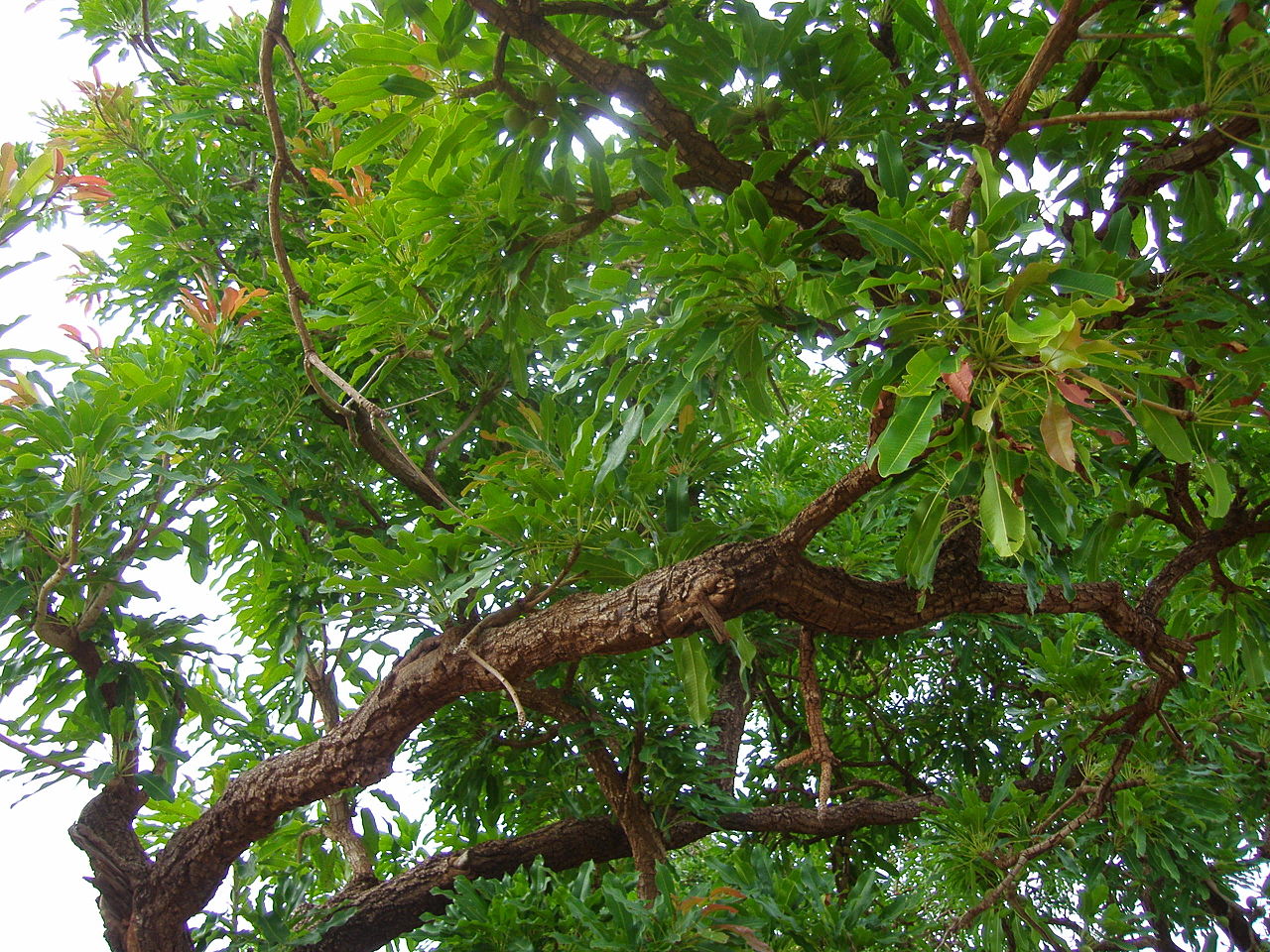Niger
Shea Tree “Karite”
Vitellaria paradoxa (formerly Butyrospermum parkii)

General Description / Cultural Significance
The Shea tree (Vitellaria paradoxa), also known as Butyrospermum parkii, is a wide-crowned, flowering evergreen tree that can attain heights of up to 25 meters. The tree’s leaves are oblong and grow at the edges of its branches, accompanied by clusters of small white flowers and plum-like fruits. These fruits contain 2-4 seeds, commonly referred to as “shea nuts.” When the nuts are dried, milled, and boiled, they yield shea butter, a highly versatile product utilized in both culinary and cosmetic applications.
In the realm of skincare, shea butter is renowned for its extensive range of benefits. It possesses moisturizing, anti-acne, anti-aging, and anti-inflammatory properties, making it a popular ingredient in moisturizers, sunscreens, and oral hygiene products. The high concentration of vitamins and fatty acids in shea butter contributes to its efficacy in nourishing and protecting the skin and hair. The shea industry holds particular socio-economic importance, often referred to as “women’s gold.” This designation stems not only from its cosmetic benefits but also from the fact that women predominantly control, manage, and distribute shea products across the African continent. In Central and Western African countries, the shea industry generates an estimated $90 million to $200 million annually, significantly contributing to local economies. In Niger and many other African nations, the shea tree is revered as the “tree of life,” symbolizing healing and nurturing energy due to its extensive practical and economic benefits.
The Shea tree also provides substantial environmental benefits. It plays a crucial role in maintaining the ecological balance of its native regions. The tree’s extensive root system helps prevent soil erosion, while its foliage provides shade and reduces the soil temperature, aiding in moisture retention. The shea tree is also important for biodiversity, offering habitat and food sources for various wildlife species. Additionally, as a long-lived species, it contributes to carbon sequestration, helping mitigate the impacts of climate change. The preservation and sustainable management of shea trees are therefore vital for both environmental health and community resilience.
Climate Change / Conservation Status
Shea trees (Butyrospermum parkii) are well-adapted to thrive in dry, savanna-like conditions. However, the population of shea trees in Niger and other key regions is declining rapidly due to the increasing international demand for shea products. Although there are no immediate natural threats to the shea tree, overharvesting driven by high commercial demand is posing a significant risk. To mitigate this threat and prevent potential extinction, regulatory measures are being developed to control the extent of corporate harvesting. These laws aim to ensure the sustainable management of shea tree populations, balancing economic benefits with ecological preservation.
Alternate Names
Shea tree
Shi tree (/ˈʃiː(ə)/)
Vitellaria
Karite
Sources
“Climate Change Reduces the Distribution Area of the Shea Tree (Vitellaria Paradoxa C.F. Gaertn.) in Burkina Faso.” Journal of Arid Environments, Academic Press, 27 June 2020, www.sciencedirect.com/science/article/abs/pii/S0140196320301373.
McHale, Ellen. “Shea Tree.” Kew, www.kew.org/plants/shea-tree. Accessed 9 July 2024.
Okoth, Edwin. “To Save the Shea Tree, Scientists Explore Predictive Breeding Tools – CIFOR-ICRAF Forests News.” CIFOR, CIFOR-ICRAF, 10 Feb. 2022, forestsnews.cifor.org/76097/to-save-the-shea-tree-scientists-explore-predictive-breeding-tools?fnl=.
Permanent Mission of Niger to the United Nations and Mr. Kabo Embassy of Niger, Washington DC. This statement can be found on the World Sensorium original website.

